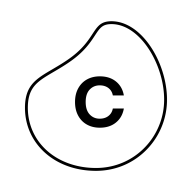Report: The State of Business Execution in 2021
This just in: business leaders blame rigid systems and technologies as well as broken or inefficient processes for creating execution gaps that damage their business performance. This is according to Celonis’ 2021 State of Business Execution Benchmark Report.
The report is based on an independent survey of 2,000 business leaders commissioned by Celonis across six countries and eight different industries. It found significant execution gaps between average and best-in-class performance in the core business functions of Accounts Payable (A/P), Accounts Receivable (A/R), Procurement and Order Management.
Based on the report analysis, these could be costing companies hundreds of millions of dollars in missed opportunities.
Those surveyed called out broken or inefficient processes as one of the top three obstacles for Accounts Payable, Accounts Receivable, and Procurement. In fact, in Accounts Payable and Accounts Receivable, respondents cited rigid systems and technologies as the biggest obstacle to performing at their full execution capacity — the maximum level of performance a company can achieve with its available time and resources.
The top three obstacles faced by respondents
The other root causes of execution gaps identified in the research include:
Accounts Payable
Rigid systems and technologies (41%)
Broken or inefficient processes (39%)
Organizational silos (37%)
Accounts Receivable
Rigid systems and technologies (42%)
Fragmented data landscape (40%)
Broken or inefficient processes (40%)
Procurement
Lack of executive sponsorship (41%)
Fragmented data landscape (41%)
Broken or inefficient processes (39%)
Order Management
Lack of flexible logistics networks (46%)
Lack of visibility into processes (42%)
Lack of visibility into supplier performance (41%)
“You can’t run a top-performing company in today’s digital world without perfecting business execution,” said Alexander Rinke, co-founder and co-CEO of Celonis. “Too often, the promises of digitization fall short because the core transactional systems that companies have relied on for years are fragmented and rigid. The best companies realize they must move from analog operations to intelligent execution and unlock more execution capacity in their businesses.”
Quantifying the execution capacity problem
Despite millions spent to transform their business operations, companies continue to face costly execution gaps. By identifying and eliminating these gaps, they have the opportunity to maximize their execution capacity to reach that of the top-performing companies.
Key differences between average and top performers highlighted by the research include:
Accounts Payable
On average companies pay on time only 50% of the time, compared to 77% for top performers
Processing a single invoice costs $17.42 on average, while top performers reduced this cost by more than half to $6.84
Accounts Receivable
Invoices, on average, are 30 days delinquent in being paid for typical companies, while the best ones reduce average days delinquent to just 8 days.
The average company scores a collections effectiveness index of 57%, compared to 84% for top performers
Procurement
Only 54% of the time do supplier deliveries arrive on time for the average company, compared to 83% for the best-in-class performers
A single purchase order costs $15 for an average company, more than 10 times the cost for the most efficient companies, which spend $1.35 per purchase order
Order Management
A single sales order costs $29.31 each to process for the average company, about three times the cost versus the best performer who spend an average of $9.94 per sales order
Just over half (56%) of orders are touchless for the average company, while the leaders reach touchless order rates of 80%
The financial impact of execution gaps
The financial impact of closing execution gaps can be substantial. Based on the report’s analysis, companies could free up as much as $567 million in working capital, and save $105 million on average.
Costs savings can come from reducing the cost to process a purchase order in Procurement or reducing the cost of a sales order in Order Management to the best-in-class performance found in the research survey. Working capital can be maximized both by improving days payable outstanding in AP and by shifting days sales outstanding in AR to best-in-class performance, benchmarked from JP Morgan’s Working Capital Index 2020.
The financial impact was based on an analysis of an average $5 billion-revenue company with an average order price of $1,500, 3.3 million in sales orders, 3 million purchase orders and a total supplier spend of $2.4 billion.
Dive into the full report
The full report surveyed over 2000 business leaders across six countries, eight industries, and four different lines of business to build benchmarks that accurately represent the state of business execution today.
Dive into the analysis to understand:
The biggest challenges facing Procurement, A/P, Order Management and A/R
How these departments are performing across key KPIs
The financial impact of avg. vs best-in-class performance
How each department can maximize its execution capacity
And if you’re curious about the financial impact calculations, or want to see them applied to your own business, get in touch.



